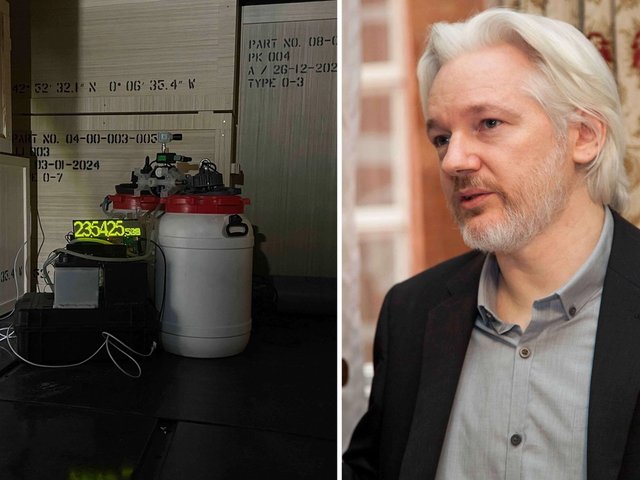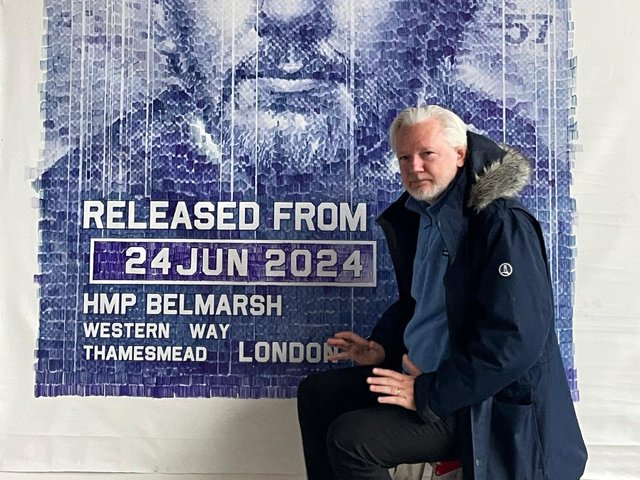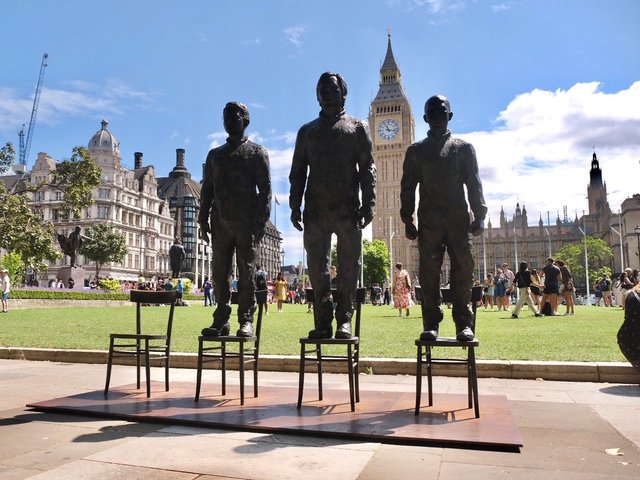The Russian artist Andrei Molodkin made headlines earlier this year with his installation Dead Man’s Switch, which was designed to bring awareness to WikiLeaks founder Julian Assange’s 14-year legal battle. The piece saw Molodkin place 16 highly valuable artworks inside a safe room in the south of France; had Assange died in jail, the counter mechanism he mentions would have been triggered, destroying the room and its contents.
Dead Man’s Switch sparked global controversy, with many criticising the artist—who is known for his political practice—for putting prized pieces by Pablo Picasso, Rembrandt and more in jeopardy. However, with Assange now back in his homeland of Australia after pleading guilty to one criminal count of conspiring to obtain and disclose classified US national defence documents, it seems the valuable cache is safe. And, according to Molodkin, Assange himself now wants to be the one to open the room and free the estimated $45m worth of art within it.
The WikiLeaks founder’s legal issues stem from the 2010 release of thousands of classified US military documents on the wars in Afghanistan and Iraq—now known as one of the largest leaks in security in US history. His journey has included living in the Ecuadorian embassy in London for seven years while fighting extradition to both Sweden and the US. On 26 June of this year, Assange walked free from a US court after striking a plea deal.
Had things gone differently, works including a Picasso from the Italian art gallery owner Giampaolo Abbondio may have been destroyed. (Abbondio, according to Sky News, says he signed a non-disclosure agreement preventing him from revealing the title of the work). Each day, a countdown was initiated and only reset after there had been confirmation of Assange’s safety from his legal team. Should that have failed to arrive, a mechanism involving acid and an accelerant would have, Molodkin says, reduced the art to “dust”.
It was a time of anxiety for Molodkin, who says the project had the backing of Assange’s wife, Stella. “Each day I would wait under extreme stress to see the counter revert back to the beginning,” he tells The Art Newspaper. “Over these months, I came to understand very quickly both the fragility of life and the possibility that everything could instantly turn to dust.”
However, in an interview with The Guardian earlier this year, the artist said he didn't think it would come to that. “I’m not trying to destroy art, and I don’t believe I will have to,” he said. He proved to be right, and also says that—despite the art world’s criticisms—he believes his work did play a role in helping to secure Assange's release.
“The hostage negotiations have finished, and Assange has been released,” he tells The Art Newspaper. “The explosive device was immediately deactivated with the liberation of Assange. Now we wait for him to open the safe and release the artworks.”






